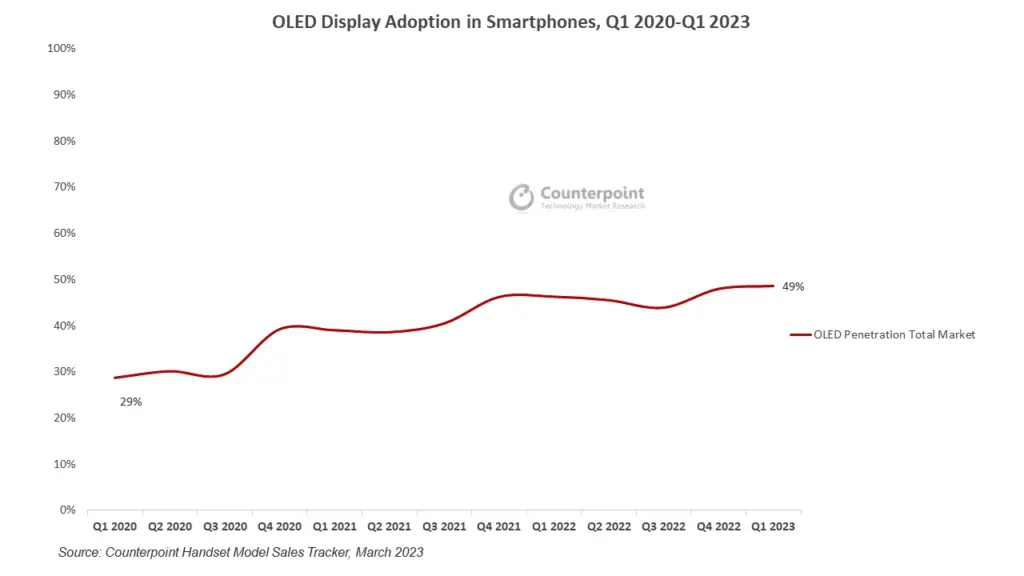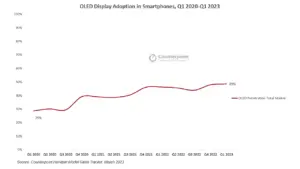The global smartphone market has witnessed a significant surge in OLED display technology adoption, reaching a record high of 49% in the first quarter of 2023, according to Counterpoint. This signifies a substantial increase from the 29% share registered back in Q1’20.

The growth in OLED display adoption is largely influenced by their superior performance characteristics such as better viewing angles, deeper blacks, enhanced battery life, and the ability to allow slimmer and curved designs. Consequently, smartphones with a wholesale price of over $250 that use OLED displays now have a dominant 94% market share in Q1’23.
The turning point for OLED display adoption in smartphones can be traced back to the launch of the iPhone 12. Since then, each subsequent iteration of iPhone (excluding the SE versions) has incorporated OLED panels. However, over half of the smartphones sold in Q1’23 were 5G capable, with a significant push seen in emerging markets for more affordable 5G options, resulting in some manufacturers to opt for LCD displays instead of OLED to manage costs. 50% of sub-$400 5G smartphones have LCD screens. LTE smartphones, which still make up over 40% of the market, mostly comprised of Android devices, all use LCD displays.
Among manufacturers, Samsung’s products use of OLED displays has been decreasing, hitting a three-year low of 41% in Q1’23, due to the growing popularity of its LCD-based A series smartphones. Chinese smartphone maker Xiaomi, on the other hand, has significantly ramped up its adoption of OLED displays, with 51% of its phones featuring the technology in Q1’23, up from 18% in Q1’21.

